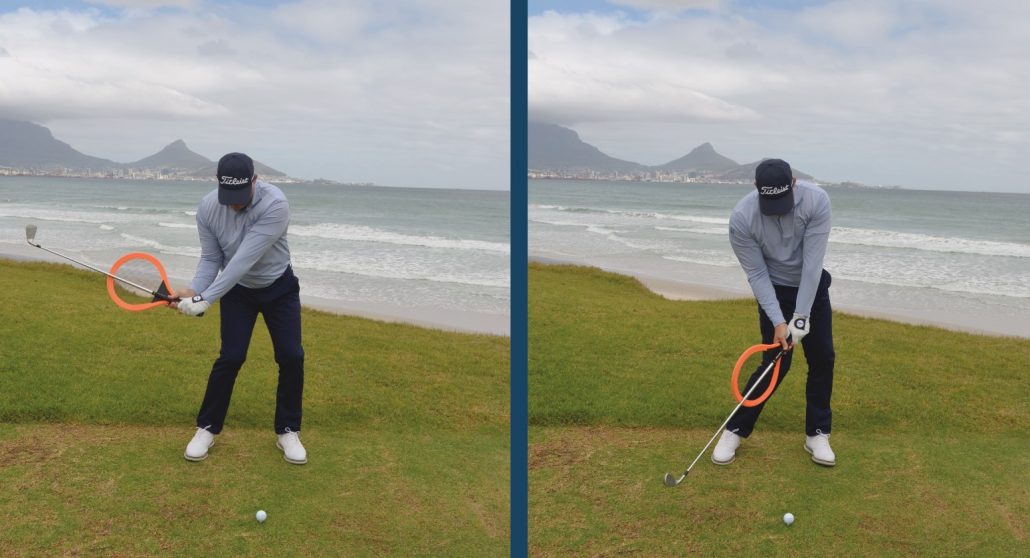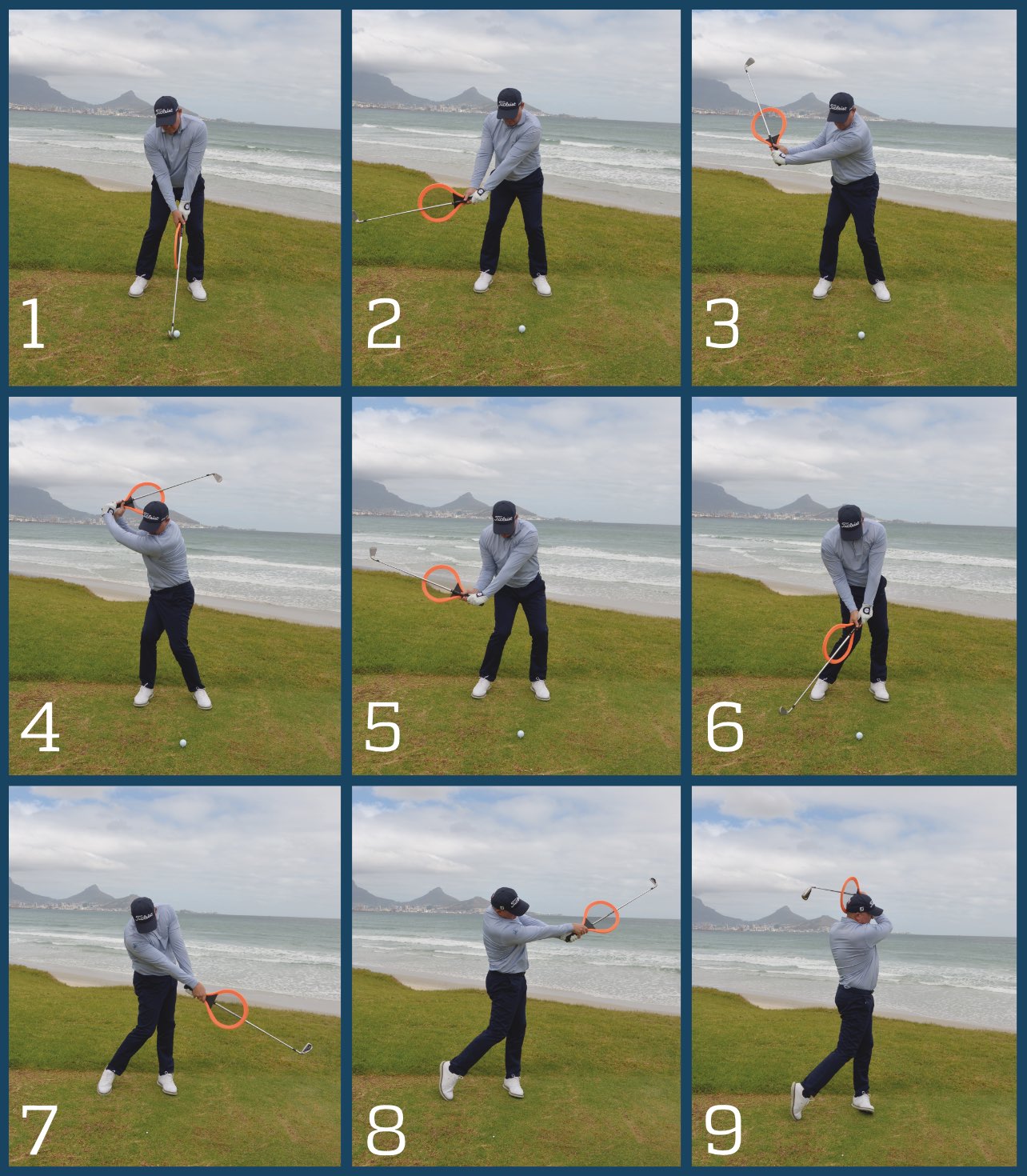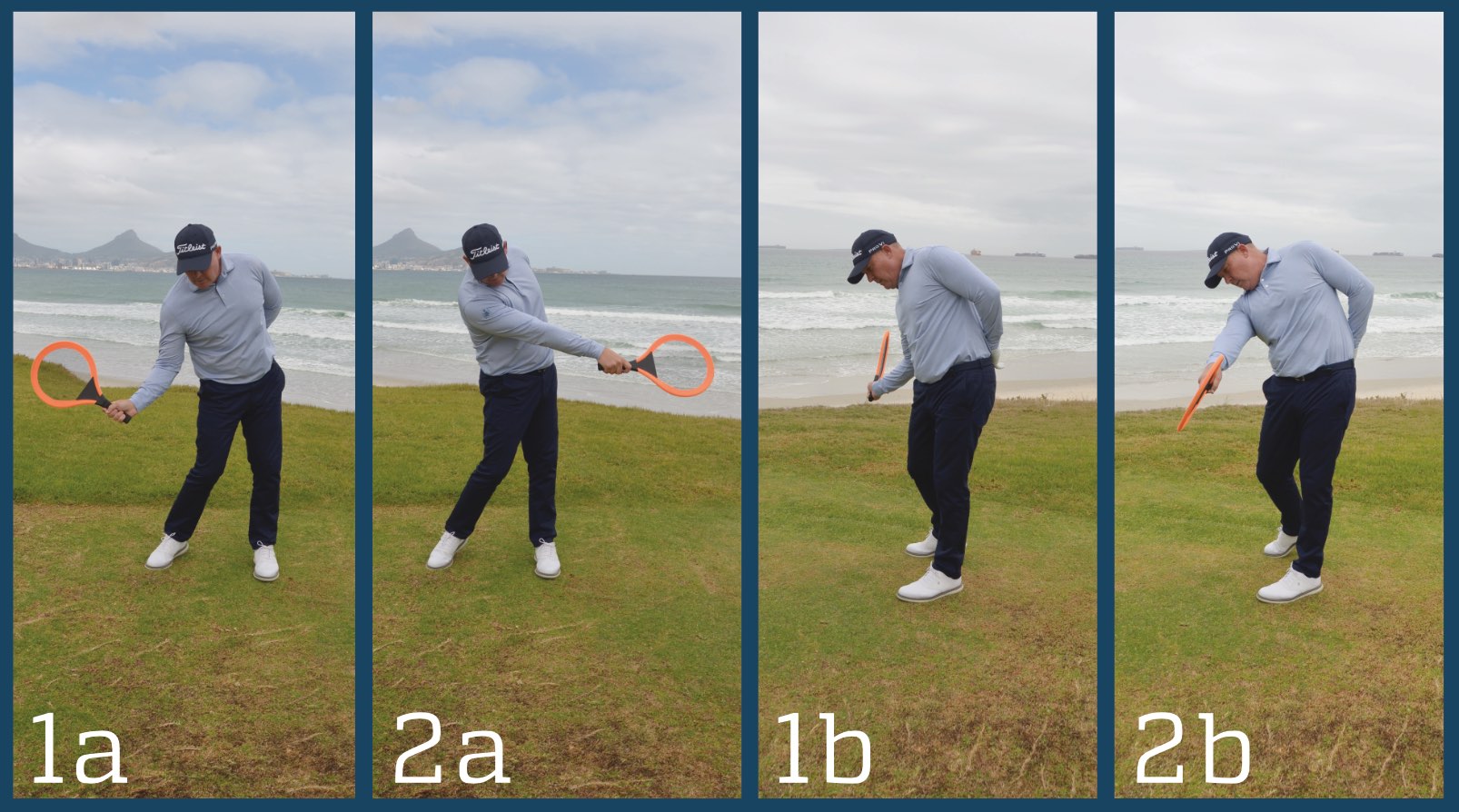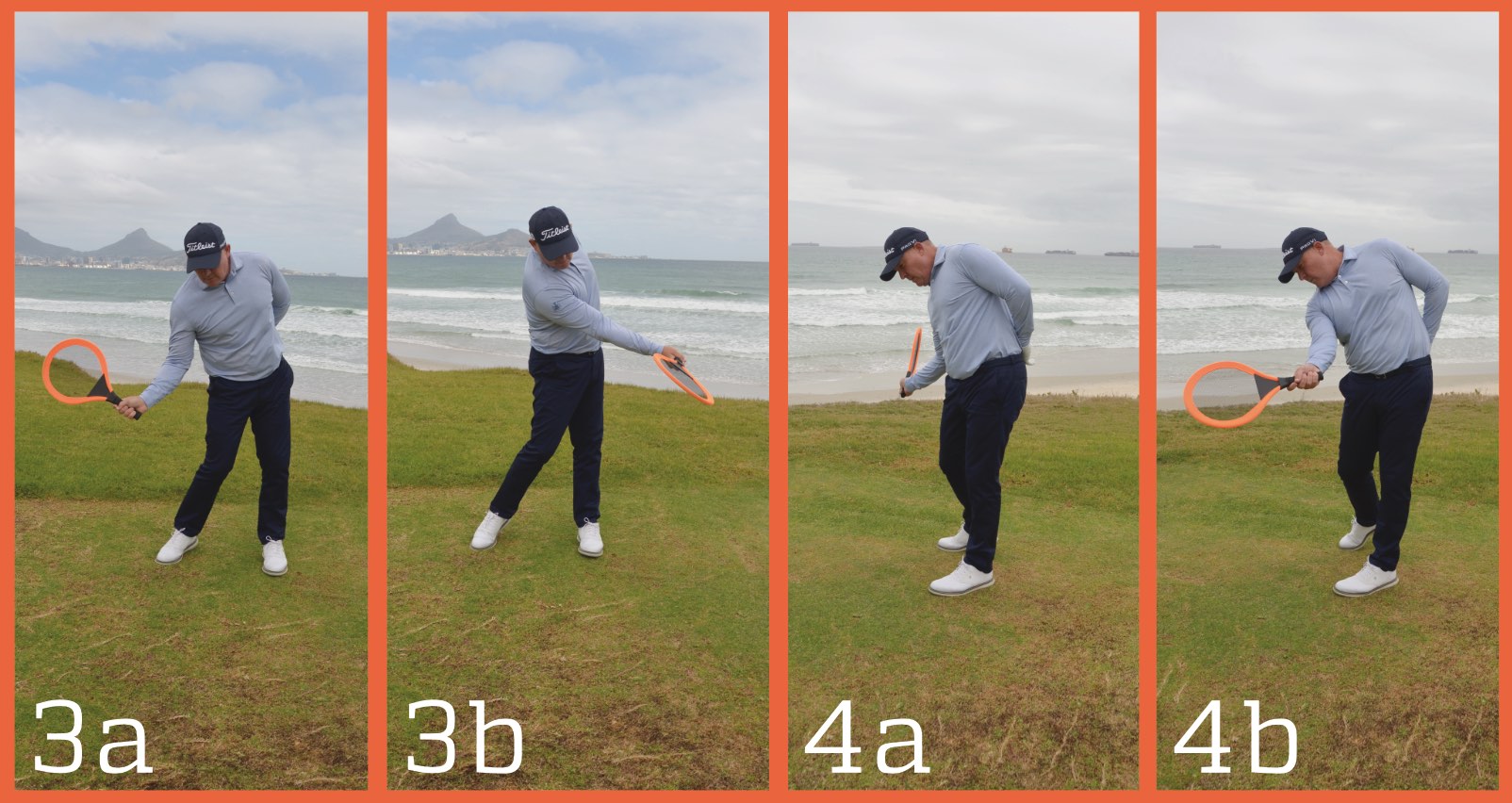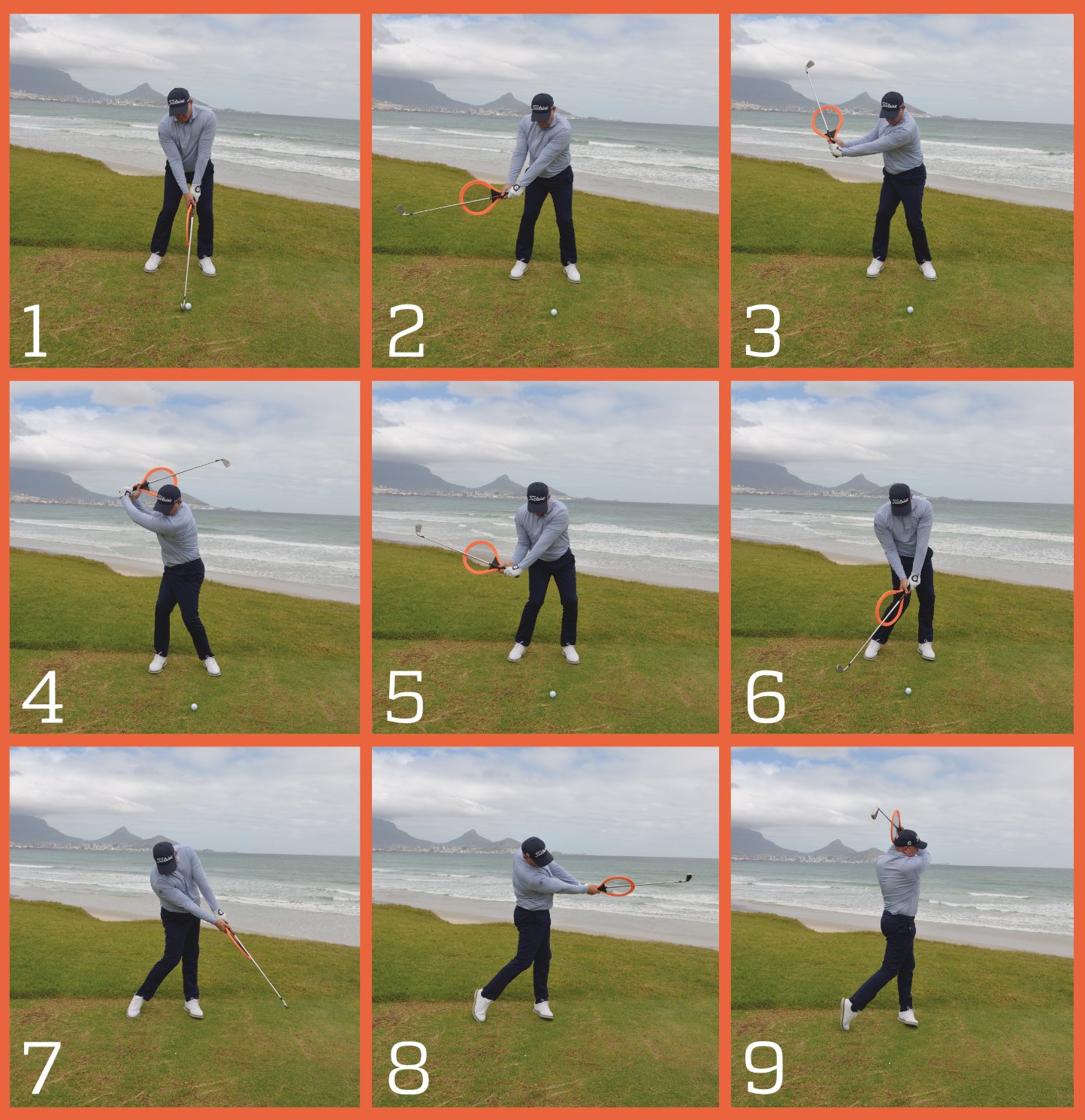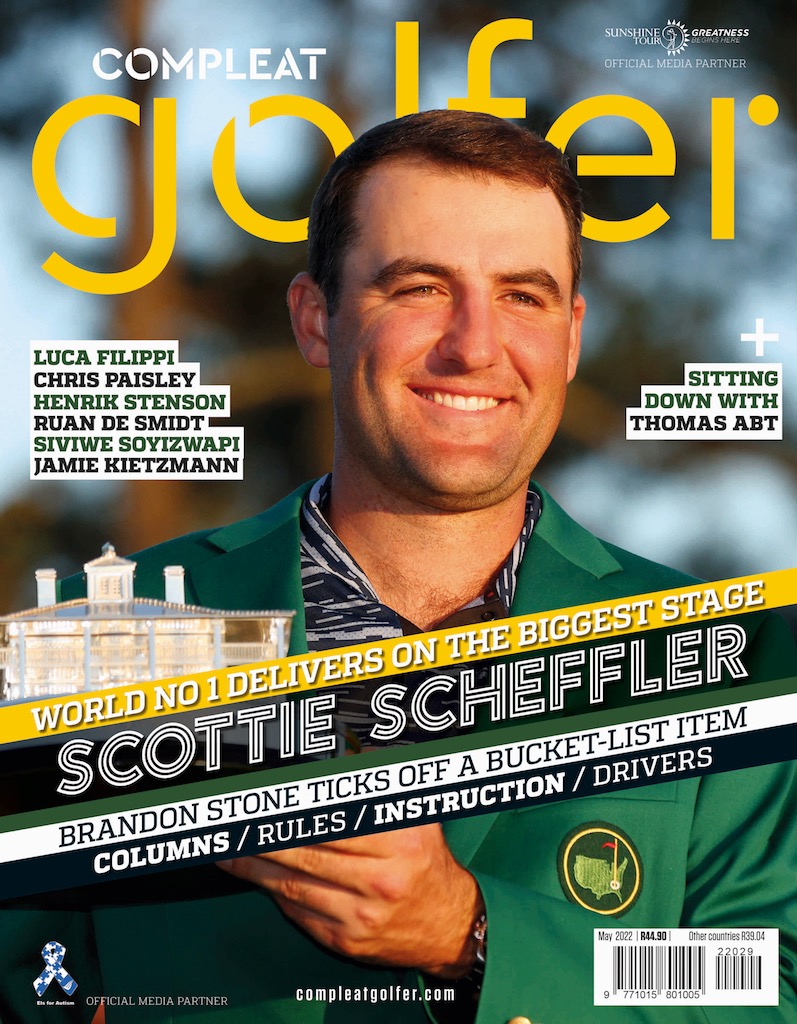This month PGA professional GRANT HEPBURN demonstrates the correct hand and wrist action required to shape your shots.
Most amateur golfers have a predictable shot shape and I’d go so far as to say that for the majority it’s a left-to-right fade (for right handers).
If it’s a controlled shape, this can be very helpful, but every now and again the situation may require you to hit a different shot shape. This month, I’ll demonstrate how the correct hand and wrist action can help you shape your shot and hit the draw or fade you’ve been dreaming of.
Using a plastic tennis racket as a visual aid, I’ll demonstrate what needs to happen with the face of your club to enable you to hit a controlled draw or fade – or to stop hitting the big slice or hook you’ve got going.
The tennis racket example is useful because most of us have played tennis and understand how to hit a forehand topspin shot or a slice. When it comes to golf, you can use the same principles as in tennis to control the spin on the ball and hit certain shapes.
Hitting a draw
Throughout the following sequences, keep an eye on the tennis racket I have in my hands. I’m holding it at the same angle as the face of my club, so that you can better follow the clubface throughout the swing.
From a good position at the top of the backswing, I start the downswing as normal and as the tennis racket (and golf club) approach the impact area I concentrate on hitting a topspin-like shot with the racket, which closes through impact. Note how my right hand rolls over my left hand through impact, closing the face of the club and causing a drawspin action.
These pictures help give you a better idea of how the hands control the face of the club. From front-on (1a and 2a), you can clearly see how the racket, and therefore the clubface, closes through impact in the same way as you would hit a powerful forehand shot down the line in tennis. Hitting towards you (1b and 2b), notice how, for the drawspin, you can’t see the strings on the racket – this is because I have hit the topspin shot.
Hitting a fade
In the sliced forehand shot, from face-on (3a and 3b), it should be obvious how the racquet, and therefore the clubface, has stayed open.
Hitting towards you (4a and 4b), you can clearly see the racquet strings, indicating that I have held the clubface open through impact.
In this swing, note how, through impact, my left hand stays on top for longer and my hands don’t cross over. Essentially, my hands do not allow the rotation of the racket, which slows down the rotation of the clubface, holding the club slightly open. This is similar to a slice shot, or a drop shot, in tennis.
– Hepburn has been a regular face in Compleat Golfer for more than a decade. His CV includes time coaching on the European and PGA Tours, and an impressive list of top amateurs and pros. He is the CEO of Golf RSA and the South African Golf Development Board. Follow him on Twitter @granthepburn.
– This article first appeared in the May 2022 issue of Compleat Golfer magazine. Subscribe here!


